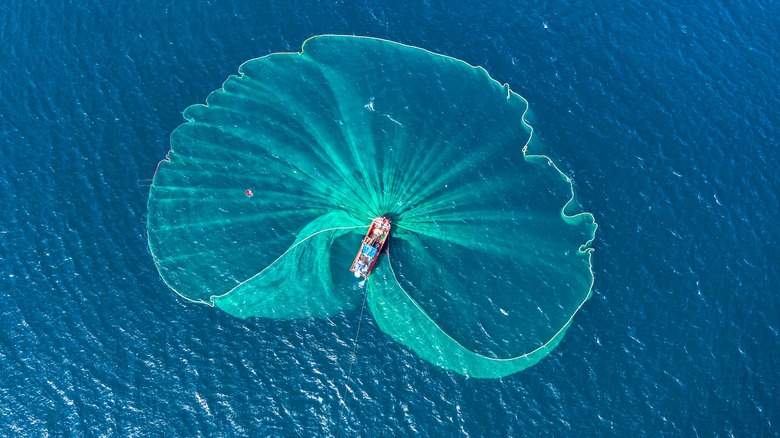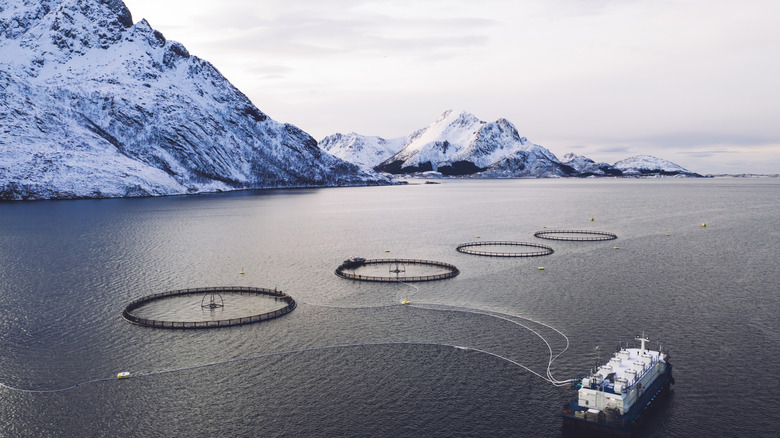Vitally Important 'Blue Foods' Have Nothing To Do With Color
In the last few years, the global food supply system has been put to the test. The impacts of the COVID-19 pandemic only bled into those of the war between Russia and Ukraine, putting a halt on the country's grain exports, and have only been exacerbated by the ongoing impacts of climate change, where we've seen wine and coffee production forever altered (via IADB, Climate Central), and droughts in India affecting rice across the globe. Through it all, it's been made clear that the system is failing. According to the United Nations, "blue foods" are the key to not only repairing that system but preparing it for a world in which climate change could make food systems even more unstable — with even more people to feed, per Future Learn.
According to Blue Food Assessment (BFA), blue foods, also known as aquatic foods, are foods that derive from oceans, rivers, lakes, ponds, and tanks. Despite being a critically important food source for billions of people around the world, the diversity and nutritional importance of aquatic animals, plants, and algae have been largely left out of discussions surrounding the food system and its vitality. Until recently, blue foods were only thought of as fish. Only now are conversations opening up about the economic and health benefits of aquatic plants such as seaweed and algae. When sourced responsibly, they're believed to be the key to building a food system that is diverse, equitable, and sustainable.
Turning the tide
At the opening of the 2022 United Nations Ocean Conference, Secretary-General António Guterres said, "Sadly, we have taken the ocean for granted, and today we face what I would call an 'Ocean Emergency.'" (per BFA). When properly managed, wild-caught and farmed blue foods produce less greenhouse gas emissions than land-based crops and livestock. However, in 2021, the LA Times reported that many of the world's fish stocks are overfished, meaning that the population is so low that it cannot support a sustainable yield (per National Oceanic and Atmospheric Administration). At the same time, there are over-intensive aquaculture systems — systems that have serious impacts on the environment — and illegal fishing fleets that strip access from local coastal communities, per a 2022 study published in "Science Advances."
According to the Food and Agricultural Organization (FAO), more than 3 billion people rely on fish for 20% of their protein. However, the BFA claims that blue foods provide more than just protein; they're also full of nutrients like zinc, iron, vitamin A, vitamin B12, and omega 3s. Should the supply increase by 8% by the year 2030, more than 160 million cases of micronutrient deficiencies could be prevented around the world. But, to achieve the UN's Sustainable Development Goals, this must be done sustainably and with small-scale fishers and aquaculture producers at the forefront. That way, blue foods will fulfill their role in restoring a food system that equally supports the health, environment, and economy of all communities.

